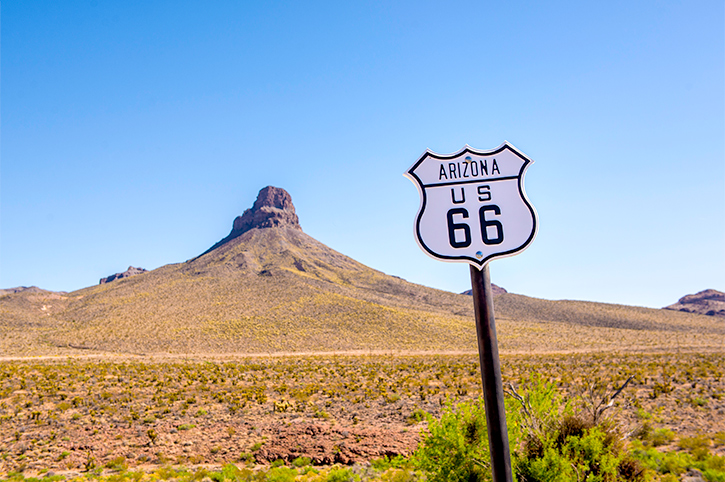
Officially opened in 1926, US Route 66 was originally built to help farmers transport grain to more small towns in the Midwest. The road eventually became America’s hottest road trip route, connecting travelers from Chicago to Los Angeles with the charm of rural American small towns in between. As the iconic road’s 100th anniversary approaches, Route 66 no longer exists as one contiguous highway. Sections of the road’s former route have since been replaced by more time-efficient interstate systems still in use to this day.
Although travelers now have faster ways to get from point A to point B, America may have lost something more than just traveling time. The byway was once known as the “Mother Road,” a name which it was given in John Steinbeck’s classic American novel The Grapes of Wrath. The route ran directly through the main streets of many Western American towns which previously saw few visitors, if any at all. As a result of those traveling the road, these small towns developed booming tourism industries. Stops along the route became gateway communities for national parks and larger cities which inspired locals to capitalize on the influx of visitors through restaurants, shops, and tourist attractions of their own. Now many of these once busy small towns are barely hanging on as the advancement of time, technology, and grander infrastructure brought larger interstates which rerouted traffic for a more direct path across the country.
Many of the communities on Route 66 were once popular destinations for travelers visiting nearby national parks. In fact, 46 National Park Service sites exist within a 100-mile radius of the historic road, including the Grand Canyon, which saw over 4.5 million visitors in 2021. However, it is unlikely that many of these visitors took the scenic and historic two-lane byway, instead opting for quicker travel options via interstate highway. The inevitable progression of transportation had unfortunate economic effects on former gateway communities along Route 66, some of which now exist as inaccessible historic pieces of Americana.
Fortunately, there is still hope for those who would rather take the more scenic route to their final destination. The National Scenic Byways Program consists of over 180 officially designated scenic byways across the country, including Route 66. The “Mother Road” is so important to the history and culture of America that it was designated an All-American Road in 2000, the highest distinction bestowed upon a national scenic byway. Despite the obvious intrinsic features of these roads such as beautiful scenery and diverse landscapes, scenic byways are protected from visual blight, including obnoxious roadside billboards. It has become increasingly important that these routes are utilized, appreciated, and supported to help preserve the iconic American road trip experience.
Although the original Route 66 experience is unlikely to ever return to its former glory, portions of the historic road are still around and thriving as tourist destinations and travel meccas. Despite being removed from the U.S. highway system in 1985, sections of the original route in Arizona, Illinois, Missouri, New Mexico, and Oklahoma–85% of the original route–have been preserved as scenic byways and remain accessible to travelers. Though many cross-country road-trippers prefer the faster speeds of travel along the interstate system, the art of the road trip lives on through scenic byways.
Next time you head out on the open road, try to “get your kicks” on one of America’s beautiful scenic byways. If taking the scenic route is more your speed, see our “Beginner’s Guide to Scenic Byways” to learn more about the personal and economic advantages of scenic roadway travel.